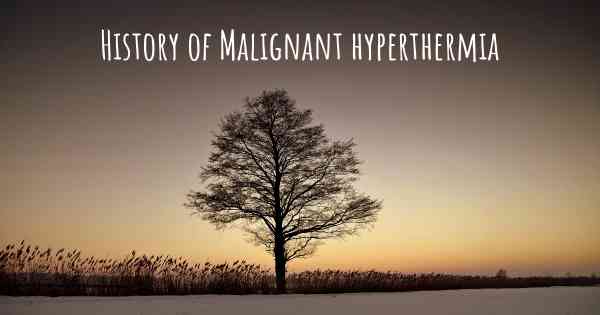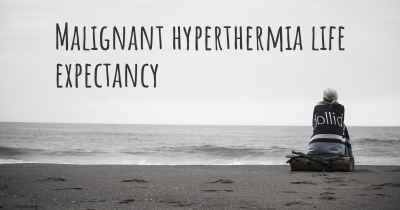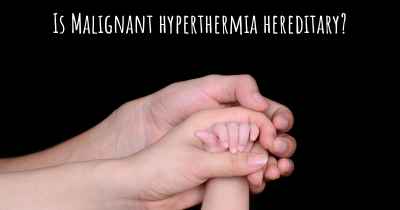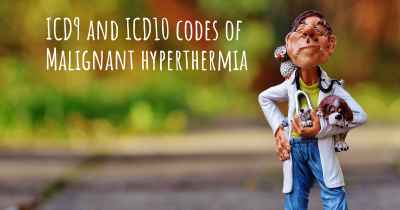What is the history of Malignant hyperthermia?
When was Malignant hyperthermia discovered? What is the story of this discovery? Was it coincidence or not?

The History of Malignant Hyperthermia
Malignant hyperthermia (MH) is a rare but potentially life-threatening condition that can occur during general anesthesia. It is characterized by a rapid rise in body temperature, muscle rigidity, and metabolic abnormalities. MH was first described in the medical literature in the 1960s, and since then, significant progress has been made in understanding its causes, diagnosis, and treatment.
Discovery and Early Cases
The first documented case of MH occurred in 1960 when a young patient experienced a severe reaction to anesthesia during surgery. The patient's body temperature rapidly increased, and they developed muscle rigidity and acidosis. Unfortunately, the patient did not survive. This case caught the attention of anesthesiologists, who began to investigate this mysterious condition.
Over the next few years, several similar cases were reported, and it became clear that there was a connection between these adverse reactions and the use of certain anesthetic agents, particularly halothane. In 1962, the term "malignant hyperthermia" was coined to describe this syndrome.
Genetic Link
In the 1970s, researchers discovered that MH had a strong genetic component. They found that individuals who experienced MH had a specific genetic mutation that affected the regulation of calcium in muscle cells. This mutation was later identified as a defect in the ryanodine receptor gene (RYR1).
The discovery of the genetic link was a significant breakthrough in understanding the underlying cause of MH. It allowed for the development of diagnostic tests to identify individuals at risk and opened the door for further research into the mechanisms of the condition.
Advancements in Diagnosis and Treatment
As the understanding of MH grew, so did the need for better diagnostic tools. In the 1980s, the caffeine-halothane contracture test (CHCT) was developed as a reliable method for diagnosing MH susceptibility. This test involved exposing a muscle biopsy sample to caffeine and halothane and measuring the resulting muscle contractions. A positive test indicated a high likelihood of MH susceptibility.
However, the CHCT had limitations, including the need for a muscle biopsy and the potential for false-negative results. In the 1990s, researchers discovered a genetic variant in the RYR1 gene that was strongly associated with MH susceptibility. This finding led to the development of a genetic test that could identify individuals at risk without the need for invasive muscle biopsies.
With improved diagnostic tools, efforts were also made to develop better treatments for MH. The cornerstone of MH treatment is the administration of dantrolene, a medication that acts to reduce calcium release in muscle cells. Dantrolene was first introduced in the 1970s and has since become the standard treatment for MH. It has significantly improved the survival rate of individuals experiencing an MH crisis.
Education and Awareness
Over the years, there has been a concerted effort to raise awareness about MH among healthcare professionals. The Malignant Hyperthermia Association of the United States (MHAUS) was established in 1981 to provide education and support to healthcare providers and patients. MHAUS has played a crucial role in disseminating information about MH, promoting research, and advocating for patient safety.
Today, MH is a well-recognized and understood condition. Anesthesia providers are trained to recognize the signs and symptoms of MH and are prepared to respond quickly in case of an MH crisis. Ongoing research continues to shed light on the complex mechanisms underlying MH and may lead to further advancements in diagnosis and treatment.
Conclusion
Malignant hyperthermia is a rare but potentially life-threatening condition that was first described in the 1960s. Significant progress has been made in understanding its genetic basis, developing diagnostic tests, and improving treatment options. Through education and awareness efforts, healthcare professionals are now better equipped to identify and manage MH, ensuring the safety of patients undergoing anesthesia.








